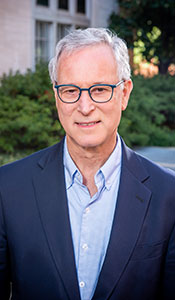As the year draws to a close, I’d like to provide a brief update on the NF Program’s research progress in the important area of animal model development. Animal models allow scientists to study the process of specific diseases and often serve as an important foundation of drug research before clinical trials can begin in humans. Our research program is continuing work on a mouse model we developed with a specific type of gene mutation, called a premature stop mutation, that is responsible for ~20% of NF1 cases. A mouse clinical trial is currently in progress with the objective of determining whether certain medications are effective in overcoming the stop mutation by either shrinking existing tumors in the mice or delaying or preventing tumor growth. In addition to the premature stop mutation model, we have also expanded the number of mutations for which we’re developing animal models, with an overall goal of establishing a library of animal models that can be used to test the efficacy of potential medications. We’re using the new gene editing approach called the CRISPR/Cas9 system, which allows investigators to “edit” the genome and quickly introduce mutations into these model systems. Although the results of our research initiatives can’t be released until they have been peer-reviewed and published (and a set of papers are now in preparation), it’s important to know that significant progress is being made in the development of animal models that are allowing us to test new drug therapies that hold promise in restoring function to genes with specific types of mutations.
In other developments, we are anticipating that by early 2016, the NF Clinic will be separated into adult and pediatric clinics located at two distinct sites: the adult clinic will be located in the Kirklin Clinic at UAB, while the pediatric clinic will be at the downtown Children’s Hospital of Alabama location. Both of these facilities provide more convenient patient parking than our current NF Clinic location in the Hugh Kaul Human Genetics building. Most importantly, the new locations will allow for a more seamless integration with the range of other medical specialties involved in the multidisciplinary approach to care that we provide to our NF patients.
Lastly, I’d like to briefly discuss some of the important issues that we, as NF clinicians, are focused on during a patient evaluation by highlighting three main points: the value of NF patients being followed by NF specialists; the purpose of annual follow-up exams; and a brief explanation of what NF clinicians are looking for during an NF exam. First, we understand that most patients have a primary care physician and we try to work together with these providers. Primary care physicians play an integral role in the healthcare continuum by providing recommended screenings, risk assessments, and vaccinations, for example. Our goal as NF clinicians is to serve as consultants by providing support and assistance. NF is a progressive disorder, and an NF clinician has experience in detecting changes in NF patients before significant problems develop and in recognizing NF-related problems when they do occur. We occasionally see patients with NF-related problems whose diagnosis was delayed, which can make the problem more difficult to manage.
Once a patient is established in an NF Clinic, exams at one-year intervals are a convenient and useful benchmark for clinicians to stay in touch with patients and detect any NF-related problems that may be developing. Also, the state of knowledge in the NF field changes significantly from year to year, especially with the progress in clinical trials and other research, and we want our patients to benefit from new treatment advances or opportunities to participate in research. The emphasis of annual exams varies depending on many factors, including the age of the patient, the type of NF involved, and the complications the patient is currently experiencing. As NF clinicians, we follow people with all forms of NF at all ages, from birth to advanced age; the problems a clinician looks for in an NF patient vary with all these factors. For example, we keep a close watch on the formation of optic nerve tumors in children with NF1 because they are more common in pediatric patients, while we’re not as concerned about this issue in adults. In general, an annual exam focuses on keeping track of known problems, identifying new signs or symptoms, and anticipating likely future issues. In an NF clinic, exams are performed by experts who can detect problems early and customize care to the needs of individual patients and their life stage.
Director's Blog
Animal Model Research Update, Plans for Adult and Pediatric NF Clinics, and the Focus of Exams in an NF Clinic
- Details
- Written by: Bruce Korf
